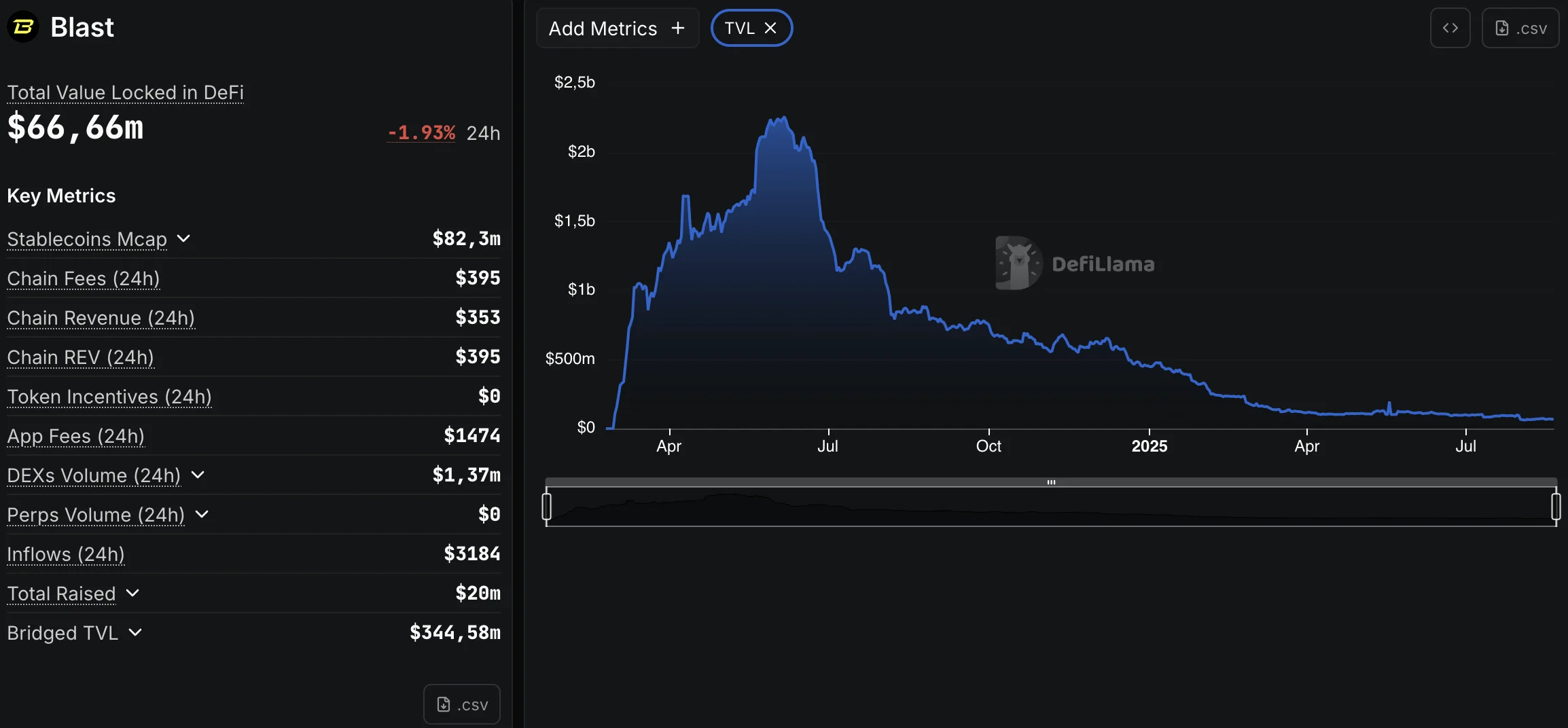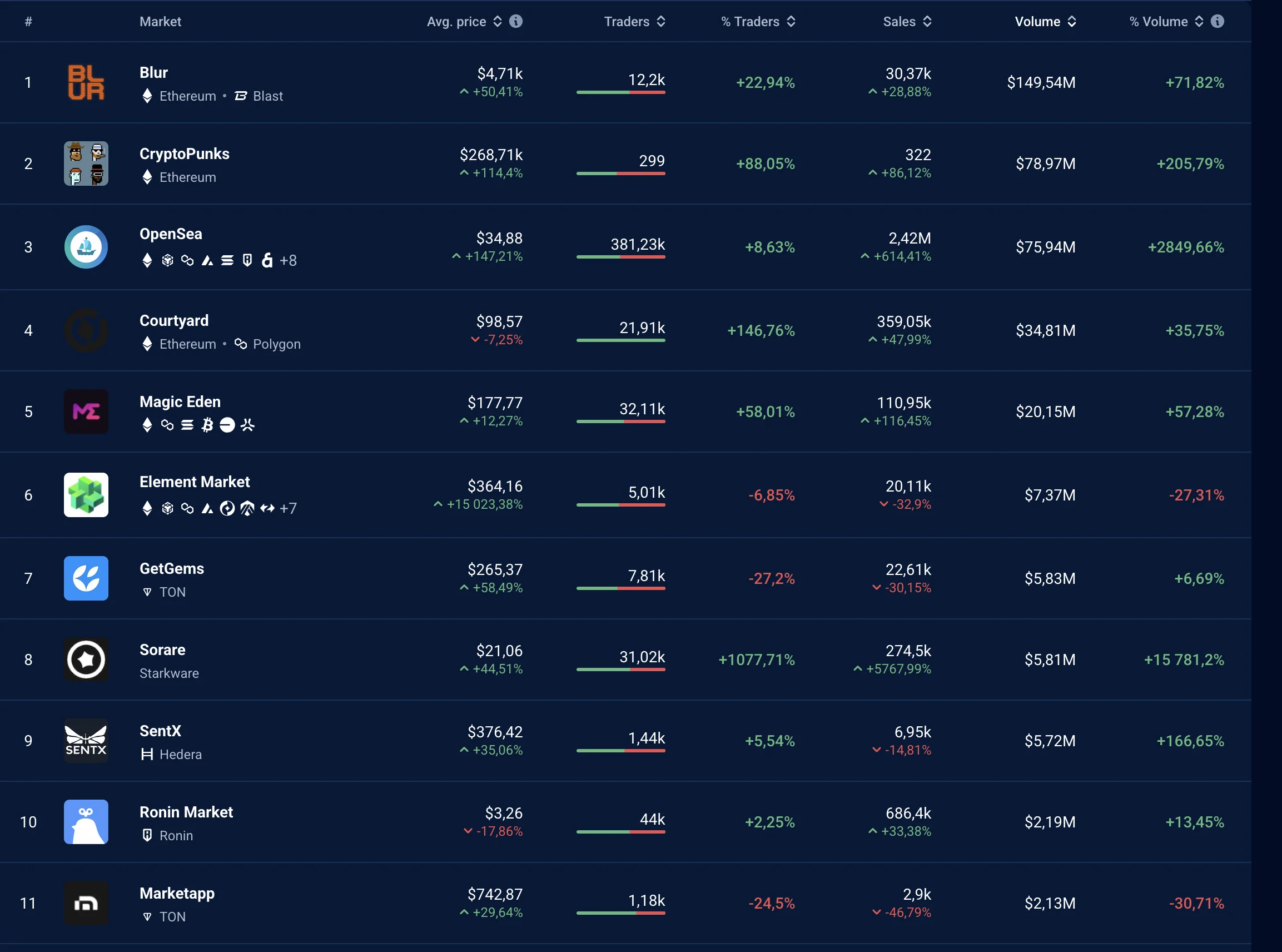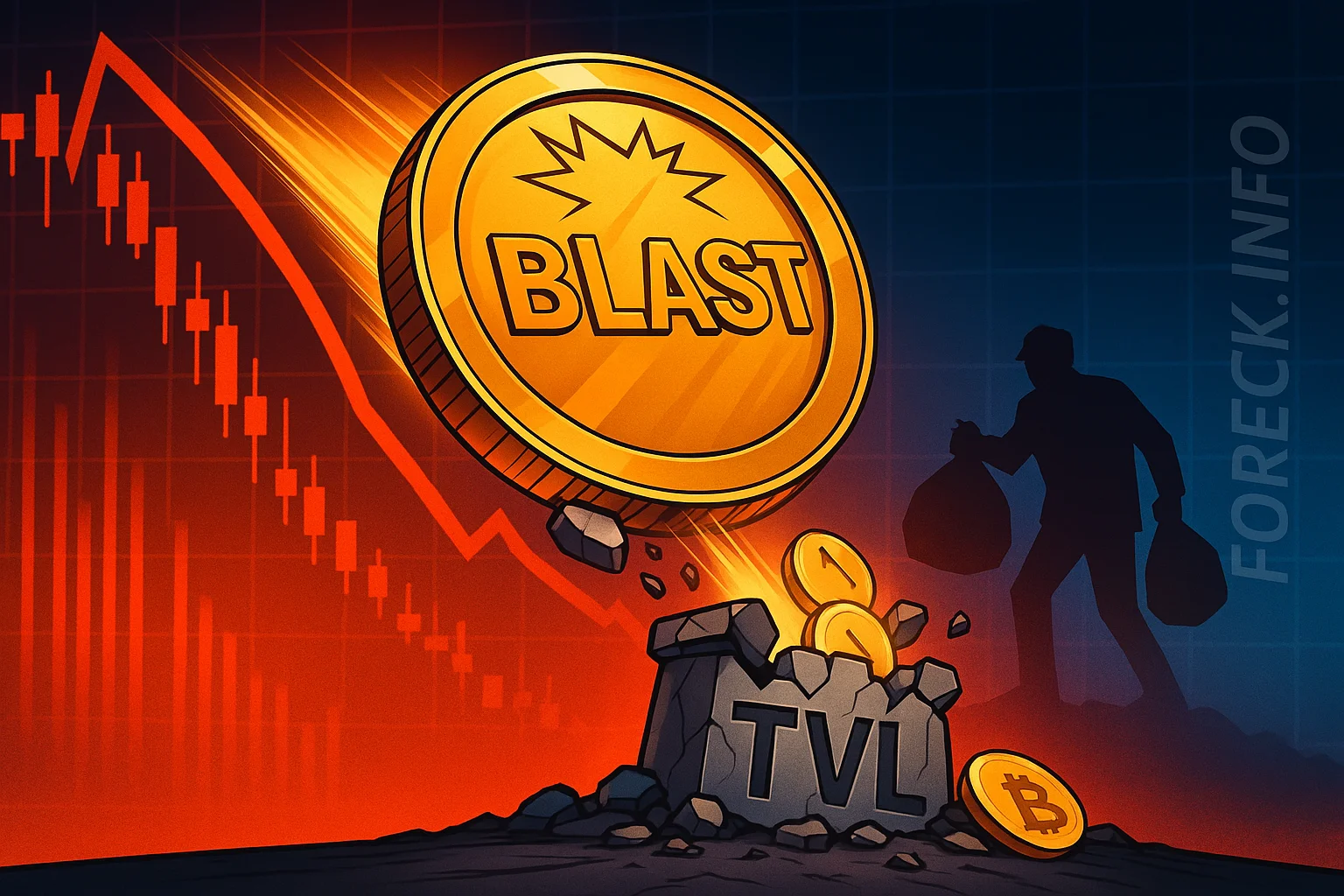From Rapid Rise to Steep Decline
Brought to market in November 2023 by Blur founder Pacman, Blast initially drew attention with its unusual model: the protocol launched without even a testnet, instead offering users passive yields of 4–5% simply for depositing assets. Today, the project advertises APRs of “up to 50%.”

Blast’s TVL peaked in July 2024, only to collapse quickly following the airdrop of its native token, BLAST. The token itself has mirrored the platform’s decline: after debuting around $0.025, BLAST now trades near $0.0025 — a 90% drawdown.

Community Silence Raises Questions
Adding to investor concerns, Blast’s official X (Twitter) account has been inactive since May 2025, with the last post referencing a partnership with Safe. Pacman’s personal account has also gone silent for the past three months.
We’ve decided not to renew our service agreement with @Safe.
— Blast (@blast) May 13, 2025
If you previously used their frontend to access your multisig wallet, you have two options:
1. Use @BrahmaFi’s hosted frontend
2. Host your own frontend to reduce supply chain risk (instructions here:…
Meanwhile, Blur — Pacman’s flagship NFT marketplace — continues to dominate the sector. Over the past 30 days, Blur recorded more than $150 million in trading volume, topping DappRadar’s NFT marketplace rankings. Yet, Blur’s official X account has not published any new posts since March.

Industry Context
Blast’s collapse comes amid broader stress across L2 projects. In June, zkLend, a Starknet-based L2 protocol, announced it was shutting down after suffering a hack and facing the delisting of its LEND token from major exchanges.
The rapid decline of Blast highlights ongoing risks in experimental DeFi and L2 ecosystems, where hype cycles and unsustainable tokenomics can wipe out billions in value within months.

